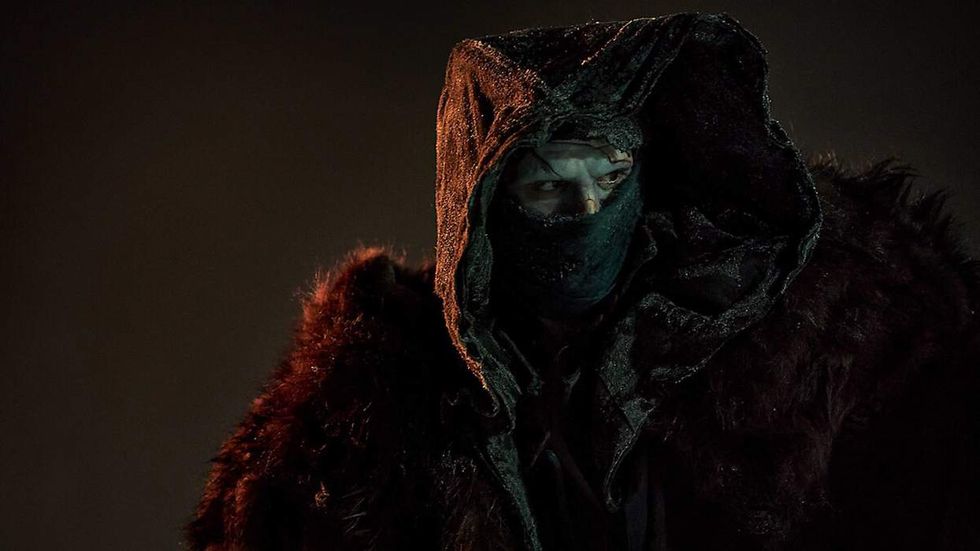
WWW.OUT.COM
Guillermo del Toro adds maternal twist to classic Frankenstein tale
Editor's note: This review contains spoilers for Guillermo del Toros Frankenstein, which premieres on November 7 on Netflix.Who is the monster, the creature, or the creator? This central theme of one of the most classic science fiction stories ever, Frankenstein, has been repeated to death (and back again). Now, Guillermo del Toro's stunning vision breathes new life into it by viewing it through a feminine, maternal lens.One fan recently wrote on X that del Toro "has the imagination and creativity of a woman who spends her time maladaptive daydreaming in her bedroom about meeting her soulmate in the most gothic situation imaginable."The filmmaker shared the post saying, "I believe I do"Never has that imagination and creativity been so clearly on display as in his new classic, Frankenstein.Frankenstein is about a man, Dr. Victor Frankenstein, who creates life by reanimating a body he has sewn together from parts of various corpses. Understandably, adaptations are often made by men and usually focus on the horrors of fatherhood.However, Mary Shelley, a woman, wrote the original novel, so it makes an abundance of sense to approach the story's creator character through a maternal angle.As both a child and an adult, we see Victor lapping up glasses of milk, trying to keep the physical connection he had with his mother as an infant, when they literally shared bodily fluids.In flashbacks, he's dutifully devoted to his mother, so much so that, as a child, he says he sees them as one person. When she dies giving birth to his younger brother, Victor is not only devastated, but grows to hate and resent his father, a celebrated surgeon, for not being able to save her.His father, with all his knowledge and skill, still couldn't do what his mother did: create life. Soon, Victor's entire being becomes centered around acquiring this power.When we first see adult Victor (played with feverish frenzy and narcissistic bravado by Oscar Isaac), he appears feminine, sporting tight, maroon gloves, long wavy hair, and a wide-brimmed hat. This Victor is our monster's mother and his father.While at a University, Victor unlocks the secret of reanimating corpses for a limited time and presents his findings to the other academics. After they shout him down, saying his work is heresy, he teams up with arms merchant Henrich Harlander (Christoph Waltz), who funds his experiments.This is where Victor meets the beautiful Elizabeth, Harlander's niece and Victor's brother's fiance. Played by horror icon Mia Goth, Elizabeth is draped in silks and tulle, appearing as an angel or a ghost, echoing the lost beauty of Victor's mother.When he finally does give birth to his son, Victor immediately slips into postpartum depression. Unable to communicate or bond with his creation, Victor shuns his child, chaining him up in the laboratory's basement. Just as soon as he's created life, he turns his back on it.Victor is still his father's son and quickly turns cold, beating his creation just as his own father beat him. His own traumatic, motherless childhood now comes back in the form of Victor not being there for his child. He has become both his father's monster and his mother's ghost.It's only Elizabeth who shows the creature any kindness, giving him the mother that Victor could not be.Victor destroys his lab, intending to destroy the creature in it, but only succeeds in freeing him. Free from his abusive parent, the creature is now able to learn to talk, read, and become his own man.Jacob Elordi (Euphoria) delivers the most nuanced and powerful performance of his career as the creature. It seems having an Oscar-winning auteur direct him to be a mumbling, stumbling, naked man-baby for his first thirty minutes of screen time was exactly what Elordi needed to become a fully realized actor and artist.The creature is still a monster, and even though he acts like a puppy or a baby deer, his size and strength are immense, and he ends up frightening or hurting many of the people around him. Eventually, the creature catches up with his creator, confronting him on the day Elizabeth is set to marry Victor's brother.There, Victor points a gun at the creature, only for Elizabeth to dive in front of the bullet and save him. Just like Victor lost the woman who loved him as a child, he now causes his creation to go through the same trauma.From there, Victor is slavishly hunting the creature across the world and into the Arctic.It's fitting that the film doesn't end on a masculine climactic battle or disaster, but with a feminine, quiet speech about forgiveness, growth, and acceptance.While it certainly takes its liberties with the tale, del Toro's film is more devoted to the source material than any other adaptation I've seen. Instead of a straightforward monster movie, the tale is a gothic romance filled with gowns, balls, veils, statues, towers, and nightmares.While the film is just as much a gothic romance as a horror, the violence, gore, and brutality do not hold back. Limbs are destroyed, backs are broken, and flesh is ripped to shreds throughout the film.Del Toro is the modern master of the monster movie, so it's no surprise Frankenstein feels like it was written specifically for him.The source material is rife with set pieces perfectly designed for del Toro's sensibilities. From frozen-over battlefields to ships stuck in the ice to fantastical gothic towers to morbidly beautiful displays of dead bodies, to stunning angels of death appearing in visions, the entire film is a visual spectacle, especially for fans of the filmmaker's style.Del Toro is already one of the greatest filmmakers of the 21st century. With Frankenstein, he's continued to cement a legacy that will delight and challenge film lovers for years to come.Five out of five stars.Frankenstein premieres on November 7 on Netflix.
0 Comments
0 Shares
92 Views
0 Reviews



